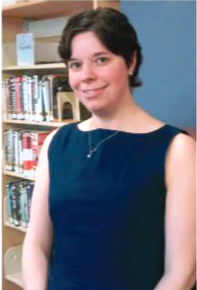This is part of a series of Session Notes from grantees who have received Professional Development grants from the Office of Commonwealth Libraries. Each grantee will share their professional development experience and include tips and other resources from the workshop or class. Grantees had their choice of an article for the Compendium, a webinar or a podcast. This project was made possible by the Institute of Museum and Library Services.
by Alexis Rittenberger
Adult Services Manager
Northland Public Library
The 2016 Library Information Technology Association (LITA) Forum took place in Fort Worth, Texas from November 17th to November 20th with approximately 300 attendees. Geared toward technology-focused professionals, the Forum offers a unique environment for creative collaboration, networking, and unvarnished reporting of tech trends in libraries. Despite its 18-year history, the LITA Forum retains a grassroots atmosphere, with highly charged keynote sessions, networking dinners, and off-the-cuff lightening talks, which all complement the scheduled concurrent sessions.
My experience this year began with the Librarians can code! pre-conference presented by Kelly Smith, Founder and CEO of Prenda (http://prenda.co). In the eight-hour pre-conference, we attacked four different projects in a hack-a-thon style setting. Each time we began a new project, Kelly challenged us with a new concept and offered coding software recommendations. He also encouraged us to customize our projects and collaborate to develop coding concepts. By the end of the pre-conference, we had experience with Scratch, PythonAnywhere, CodePen, and code.org’s AppLab. Our final projects included a pong-style game, an interactive story, a website, and a phone app.
During the conference itself, I attended a session titled Circulating Wi-Fi Hotspots in Public Libraries presented by Rae Chaney from the Keller Public Library in Keller Texas and Scott Bennett, the National Director of Sales at Manage Mobility. Like most public libraries, my system is considering adding Wi-Fi Hotspots to our list of services. The session was extremely valuable because Keller Public Library is in an affluent area, similar to my own library. In these areas specifically, it is sometimes difficult to identify why a library would need to circulate Wi-Fi Hotspots. Rae cited the following patron types as groups who currently use the service at her library:
- Job hunters
- Students
- Senior Citizens
- Patrons going on vacation / traveling for business
- Patrons whose internet is down
- Patrons who have recently moved into the area
Aside from simply explaining why Keller Public Library circulates Wi-Fi Hotspots, Rae and Scott discussed the day-to-day management, funding, and promotion of the service. Companies like, Manage Mobility, guide libraries through the decision-making process by helping them define data limits, offering packaging choices, and providing a platform for administering the devices. In terms of funding, Rae explained that the first six months of financial support came from her Friends Group with ongoing support coming from funds donated through patrons’ water bills. Both speakers echoed the importance of financial planning past the initial device roll-out. Without additional financial support from school districts, municipalities, and the community, this service will likely fail. Finally, Keller Public Library promoted the Wi-Fi Hotspots in a variety of ways, including offering a class to Senior Citizens teaching them how to pay bills online. To learn more, access Keller Public Library’s Wireless Hotspot policies or procedures.
Another excellent presentation I attended was Information Architecture Competencies for Librarians. Ekatarina Grguric, a fellow at the North Carolina State University Libraries, discussed the workflow and procedure she uses for teaching librarians about Information Architecture design and implementation. According to Ekatarina, the three steps required for a successful design are:
- Perform an environmental scan and evaluate precedent.
- Have conversations with key stakeholders to identify their needs.
- Conduct structured brainstorming to satisfy organizational needs
Throughout her presentation, Ekatarina stressed the value of communication in an organization along with a shared understanding of the definitions of words. As a matter of fact, the IT Department at NCSU libraries meets with all new employees to teach them the library’s taxonomy and language. It is through these face-to-face meetings, where the organization’s Information Architecture exists as an organic structure.
This session was most relevant to me as a manager and newer employee because it provided a framework for understanding my library’s current Information Architecture. With each conversation, there is potential for better continuity and a stronger design. The session also served as a reminder that Information Architecture should grow in harmony with the organization. Finally, I was intrigued to learn about new methods for conducting usability testing, like Jenn Downs’ laptop hugging method.
In conclusion, the 2016 LITA Forum proved to be a valuable experience. It offered the opportunity to learn new technologies, get first-hand accounts of changes in library services, and improve my skills as a manager. In all honesty, it was the perfect professional development experience. You can learn about the other sessions offered at the LITA Form on the LITA website or view the slides from all of the presentations on the presenter wiki.

